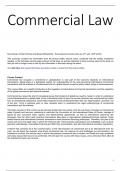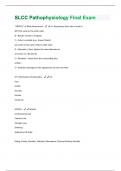Summary
Complete summary Commercial law: Lecture notes, Book, Articles and Legislation.
- Module
- Institution
- Book
Very extensive summary of Commercial Law 2024. The summary of 216 pages includes lecture notes, all mandatory readings (the book + articles), transcribed Youtube videos, and the relevant legal provisions as to prevent constantly having to look them up during the exam. The summary also includes the...
[Show more]













